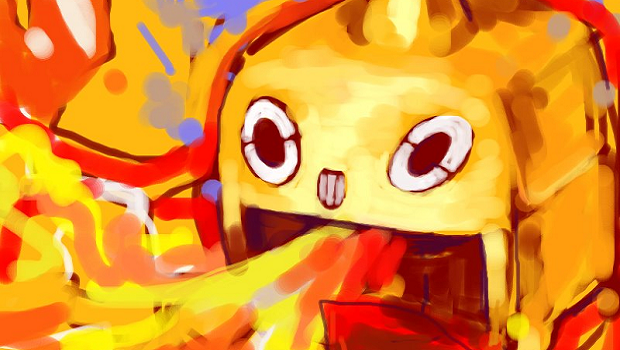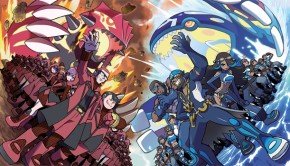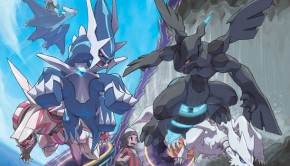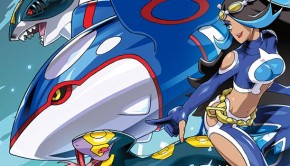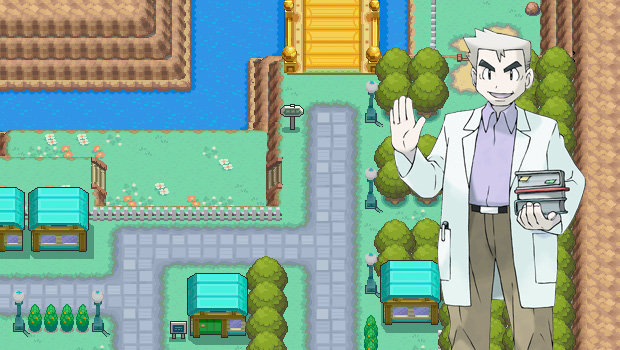Playing with Fire: An Overview of Fire Types in VGC
Fire-types are not abundant in the Pokémon world — there are only a few viable Fire-types in total. What Fire brings, however, is great offense but less than stellar support and defense. Defensively, Fire-types suffer from common VGC weaknesses in the forms of Water-, Rock- and Ground-type attacks, which makes Fire-types weak to most spread moves in the game, and usually possess stats that are more geared towards offensive than defensive sets. However, Fire-types usually have excellent offensive options, and Fire typing pairs well with many other types to grant some useful resistances and great coverage options. Here are a few top-tier Fire-types to get you started.

Chandelure
I can’t fail to mention Chandelure, seeing as it helped me out plenty during my own VGC games. Chandelure’s Ghost- and Fire-typing work well together, granting Chandelure immunities to Normal- and the ever common Fighting-type attacks. Chandelure’s Flash Fire ability also grants it immunity to Fire-type attacks in addition to boosting its own Fire-type assaults when hit with an enemy’s Fire-type attacks. These three immunities make it easy for Chandelure to switch in and out despite being a very offensive mon.
Speaking of offense, Chandelure has 145 base Special Attack, the highest of all non-banned Pokémon in VGC Modified. Chandelure gets several notable offfensive options with which to abuse this high Special Attack stat, all of which have merit on the chandelier. Heat Wave gives Chandelure a strong, STAB spread attacck, while Overheat takes care of a single target with a devastating blow. Unfortunately, Overheat will drop Chandelure’s Special Attack by two stages, limiting its staying power. If you prefer not to have to switch Chandelure around, it also has access to Fire Blast and Flamethrower, with Fire Blast being the more powerful of the two but at the expense of accuracy. Chandelure’s Ghost-typing gives it access to STAB Shadow Ball which helps against Cresselia and Pokémon that resist Fire-type attacks. As for additional coverage, Chandelure has some other nice attacking options of which I like Energy Ball the best as it provides a straight counter to Water types as well as other types that might give Chandelure trouble such as Ground and Rock Types.
Chandelure can also work as a support Pokémon thanks to its three immunities and base 90 Defense. Most notably Chandelure has access to Trick Room and is one of the better choices for setting Trick Room if you need extra offensive power. Chandelure can also burn opponents with Will-o-Wisp and use Safeguard, Swagger and Imprison. Most standard Chandelure will be of the attack type, however, with Trick Room being the next most common. Chandelure was a staple of my own Worlds LCQ team, and I really encourage people to try it and play around with it. You won’t be disappointed.

Heatran
For me, Heatran has been enough of a mixed bag to warrant it not being used on my team, but it still has enough good things going for it to be used by others. It has a ton of resistances, thanks to its Steel-typing, trading Fire’s Rock-type weakness for a Fighting-type weakness and adding resistances to Dragon, Psychic, Ghost, Dark and many other types as well as a Poison immunity. However, the thing that worried me most about using Heatran is its 4x weakness to Ground-type attacks. When teams make Heatran work, it’s usually by finding some way around that Ground-type weakness. For example, check out Wolfe Glick’s 2nd Place Worlds Team, where Heatran works alongside Cresselia who Skill Swaps Levitate onto Heatran, making it immune to Ground-type attacks in exchange for losing its immunity to Fire-type attacks. Combine this with Heatran’s excellent defensive stats (91 HP, 106 Defense and Special Defense) and you’ve got an excellent defensive tank.
Heatran’s offensive movepool, however, is fairly limited, with most sets opting for just Heat Wave and Earth Power as their attacking options. Heatran does have access to Overheat as an alternative Fire-type option, but the Special Attack drop hampers it much more than Chandelure as Heatran likes to stay on the field as long as possible. Heatran can also use Dragon Pulse and Flash Cannon, but Hidden Power Ice is usually better than the former and Earth Power hits the same targets as Flash Cannon and then some. Heatran is one of the few defensive Fire-types, so if you’re looking for something bulky and with a lot of staying power, this might be your mon.

Rotom-H
Though many prefer Rotom-W’s Water/Electric typing for its coverage and resistances, Rotom-H is still seen on many teams. While Rotom-H is much less defensive than its washing machine brother, it makes up for it with its excellent Fire/Electric offensive typing. Overheat is Rotom-H’s calling card and works quite well alongside Thunderbolt to nail Grass-, Steel- and Ice-type Pokémon. Rotom-H’s Electric-typing helps it out against most Water-type Pokémon that would otherwise threaten Rotom, though it unfortunately cannot do much against enemy Gastrodon. On the other hand, Rotom-H’s Levitate means that Gastrodon can’t hit Rotom with its Ground-type attacks and many Gastrodon opt out of using Water-type attacks in favor of Ice- and Ground-type attacks plus Recover or Stockpile. Rotom can also patch up this weakness by adding Hidden Power Grass.
Rotom-H can also learn support moves like Thunder Wave, Will-o-Wisp and Confuse Ray, but it’s generally better off as a straight attacker. Rotom makes particularly good use of Choice Scarf or Choice Specs as it’s already going to be switching a lot thanks to Overheat’s Special Attack drop. Rotom can also abuse Volt Switch with a Choice item to bounce around the field and use Trick to disable an enemy Pokémon by stealing their item and replacing it with Rotom’s.
Personally I prefer Both Washer and Freezer Rotom over Heat Rotom, simply because they have moves that don’t cause special attack drops, but while I don’t think Rotom-H is the best Rotom forme out there, I do think Rotom-H is one of the better Fire-types.

Infernape
The choice to include Infernape of Blaziken was very hard: both Pokémon share the same Fire/Fighting dual typing, and both can hit hard on both physical and special sides. What tipped the scales in Infernape’s favor over Blaziken’s was Infernape’s access to priority and support movepool. While Blaziken has access to Speed Boost, Infernape receives Fake Out and Mach Punch in addition to its excellent support movepool which includes Encore and even Helping Hand. Infernape’s access to both Encore and Fake Out makes him one of the few Pokémon that receives both and by far the most viable. In addition, Infernape is a viable attacker on both sides of the spectrum with attacking options of Heat Wave, Close Combat, Grass Knot and Acrobatics giving him vast coverage and an unpredictability. If you need a quick, mixed offensive Fire-type that is also capable of supporting your team, you could do worse than Infernape.

Volcarona
The Blazing Bug fascinated me as soon as it was first shown. Bug/Fire is a kind of awkward dual typing which eliminates Fire’s Ground-type weakness, but adds a Flying-type weakness and compounds Fire’s Rock-type weakness. However, Volcorona’s Bug/Fire typing does give it excellent offensive coverage, now letting it hit Psychic- and Dark-type Pokémon like Cresselia and Hydreigon for super effective damage with STAB Bug Buzz. Volcorona is one of the few boosting Pokémon you’ll see in VGC play as its Quiver Dance gives it +1 in Speed, Special Attack and Special Defense after just one turn. Usually paired with Hitmontop, this “TopMoth” combo can devastate teams that are unprepared for it.
But that’s not Volcarona’s only niche. Counterintuitively, Volcarona can function on Rain teams even though it’s a Fire-type thanks to Hurricane which gives Volcarona a powerful Flying-type attack to abuse which, alongside Bug Buzz, can take out Fighting- and Grass-type Pokémon that might give a Rain team trouble. Similarly, Volcarona can opt for an all out attack set using Overheat and a Fire Gem to waste opponents who overprepare for Quiver Dance Volcarona. Volcarona can also use Rage Powder and act in a supporting role to protect frail partners. This unpredictability makes Volcarona one of the deadlier opponents as you’re never quite sure what you’re going to get. This Pokémon is definitely one to watch out for.
Burning with Desire
Fire-types are first and foremost attackers, as you can see, but that’s not all they are. You can choose more defensive, tankier options like Heatran or a support based Infernape, Volcarona or Chandelure in addition to the raw power of some Fire-types. I like using Fire-types, and I definitely recommend them on any team, but the choice of which one to use is up to you and depends on the makeup of your team. As always, no Pokémon is uniformly great on its own, so if you want to use a Fire-type Pokémon, it’s best to know the role that each one fills and make sure that matches up with your team. I hope this article has given you a starting point for your own team building and inspires you to try out some of these fiery Pokémon. I hope to see choices other than mine appear way more often, so let me know if you think I’ve left something out or am underselling your favorite Fire-type in the comments section below.
Article image created by ryuzaki and used with permission by Nugget Bridge. See more of ryuzaki’s artwork on deviantART.

